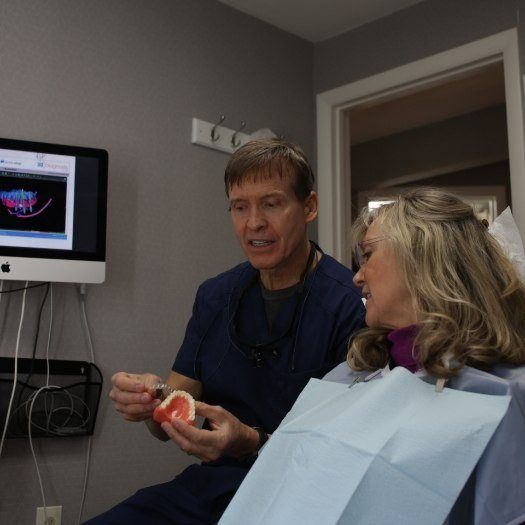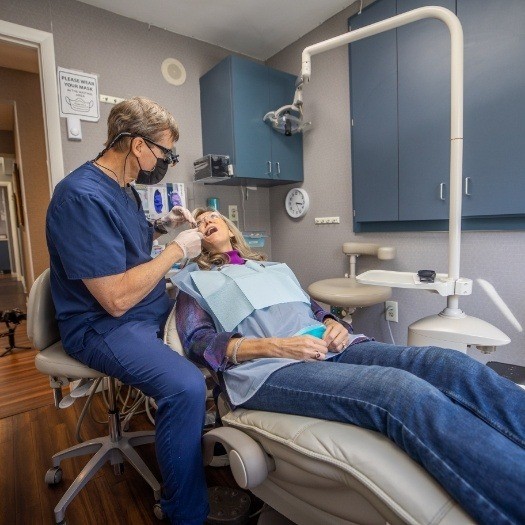Crowded Teeth
Overcrowding is when the teeth begin to overlap, making it harder to clean between teeth and remove harmful plaque and tartar. However, Invisalign® can begin to shift teeth so that adequate space is created, allowing for more effective and successful brushing, flossing, and rinsing. As a result, you can enjoy better oral and overall health as well as a more confident smile.
Gaps Between Teeth
If you have gaps between your teeth, your teeth are likely too small, so they don’t take up the necessary space, or your jawbone is larger than normal. This problem can also develop because of thumb-sucking or tongue-thrusting as a child. With the help of Invisalign®, though, the clear aligners can close the gap(s) to reduce the potential for gum disease while also creating a beautiful smile.
Overbite
An overbite is a type of misalignment that occurs when your top teeth project too far out over your lower teeth. This is also known as an overjet, and it can cause jaw pain as well as a speech impediment. When Invisalign® aligners are used, your jaws will move over time to not only create a more appropriate gap between your upper and lower rows of teeth but also generate a visually pleasing aesthetic.
Underbite
If you bite down and notice that your lower row of teeth sits further out or matches up with your top row of teeth, you have an underbite. Genetics, thumb-sucking, overuse of a pacifier, or even a jaw injury might be to blame, resulting in problems such as those associated with sleep habits (i.e., sleep apnea). Invisalign® can serve as a viable solution, though, especially when combined with rubber bands. They will gradually move your bite and move your lower arch back so that it settles in the appropriate position.
Crossbite
Invisalign® can be used to treat a crossbite should you find that your bottom teeth sit slightly in front of your upper row of teeth. Although genetics, early loss of baby teeth, and unhealthy oral habits may be the reason for a crossbite, our team can fix this problem, even if it’s the result of jaw development. By combining Invisalign® with elastics or other similar accessories, we can better move your jaw into alignment.
Open Bite
Do your front teeth touch when you close your mouth? If not, you may have an open bite. This often develops because of thumb-sucking or overuse of a pacifier as a child. It can also occur if you suffer from poor bone development. You may find it difficult to pronounce certain words, but Invisalign® can bring your front and bottom teeth together, helping to improve your bite pattern and reduce any risk of dental damage.












